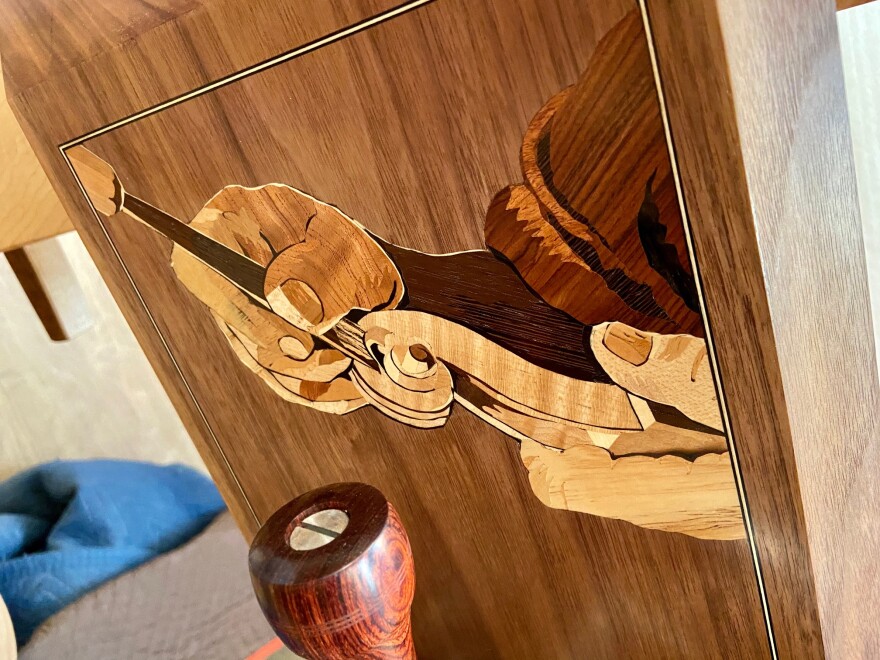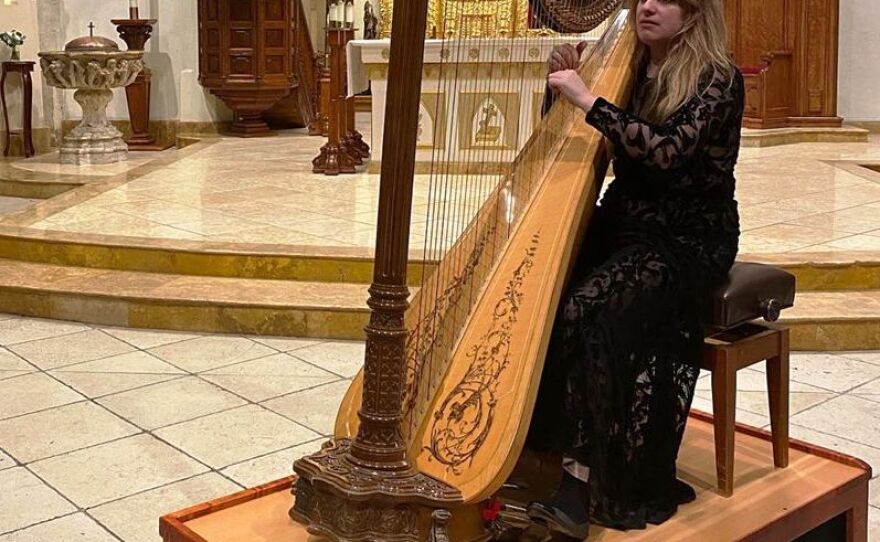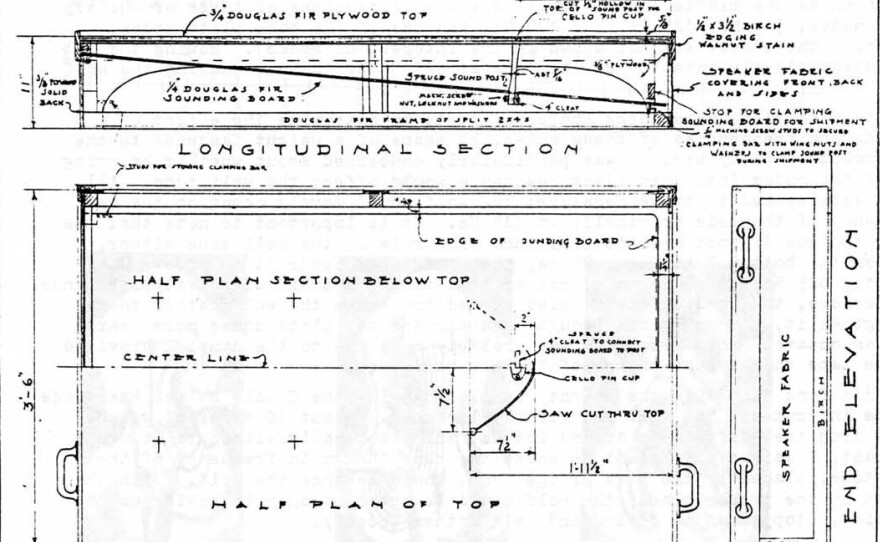A chance meeting between two lovers of music ended with something that neither of them alone could create. It’s the story of two very different crafts, and the craftsmen who ply them.
Forty-something craftsman and furniture-maker Frank Strazza has a shop in Bandera filled with projects, wood and tools.
"Okay… so that's it. So then I'll just take a plane and plane it off flush," he said.

In the course of about five minutes he had taken two 1-by-4 pieces and made a beautiful dovetail joint. Strazza said his love of woodworking came early on in life.
"By the time I was 12 years old, I knew I wanted to be a furniture maker,” he said. “I built a hand-cut, dovetailed, blanket chest for my parents. They still have that at the foot of their bed."
Strazza had the chance to study carpentry in the European tradition, right here in Texas.
"When I was 17, I had a great opportunity to do an apprenticeship. And I apprenticed with a craftsman outside of Austin," he said.
After the apprenticeship came a journeymanship.
"A journeyman would go on to study with a different craftsman, to maybe learn a different way, a different style of working," he said.
Studying under two different craftsmen gave him an exceptional baseline skill onto which he's built for the last 30 years.

"It takes a lot of hard work. Obviously having that good foundational training is superb,” Strazza said. “But then there's the time spent at the bench behind the tools with the materials."
Just as he hit the ground running as a wood craftsman, he got another itch.
"Right about the same time that I started my apprenticeship, I started getting interested in playing the cello," he said.
The other key person in this story is Ken Freudigman.
“I'm the principal cellist of the San Antonio Symphony. I've been there since 2005. I'm also the artistic director of Camerata San Antonio, [the] Chamber Group that has been performing in San Antonio since 2003," he said.
As a college student, Freudigman was experiencing his own kind of apprenticeship at downtown Rochester, New York's Eastman School of Music. Over his time there something emerged in Freudigman's mind about the curious inequality of musical solos. Most instruments could elevate their sound above the rest of the orchestra.
https://www.youtube.com/watch?v=Pn236JvQvjg
"The piano is up off the floor. The violinists stand when they play or if there's a trumpet solo, they're all up," Freudigman said.
Cellists though, have to play sitting. But there at Eastman he heard there might be a solution.

"We heard that there were these designs for a cello podium. A cello podium that actually had a sounding board and a sound post," he said.
Despite his best efforts though, those elusive designs simply couldn't be found.
"So I forgot about it for 20 years," he said.
But then fate tossed him the first curve.
“I was searching on the internet and I found this place called the Cat Gut Society," he said.
The Cat Gut Society is a group of people who play acoustic stringed instruments.

"And I was looking in there and sure enough, these plans were there!"
He resolved then and there to get it done.
Then years later, fate tossed him another curve. After performing with his chamber group Camerata San Antonio, he met Frank Strazza. Finding out Strazza was a wood craftsman, well, he had his solution.
"I sent him the plans and he just jumped at the chance and he thought this would be a great idea," he said.
Strazza remembers that the design wasn’t just pretty. It had an interesting acoustic function.
"This cello podium was unique in the sense that it's an acoustic podium. It's essentially an acoustic amplifier," he said.

Strazza reminds us: music is made up of sound waves. And every acoustic musical instrument is designed to produce them.
That big piece of wood that's the front of a guitar is made to vibrate and push the sound generated by the strings.
"So, what I did with this cello podium is I actually took the inside and I made a soundboard similar to a guitar. But I actually curved it to simulate the arching of a cello or a violin," Strazza said.
So he built Freudigman a cello podium about 5.5-by-3.5 feet, and not quite a foot tall. Freudigman said it's really something to see.
“You look at this thing, they're all hand cut dovetails,” he said. “I mean, it is a work of art. And not only that, it sounds amazing!"
Strazza said the cello podium’s design is pretty sophisticated.
"The vibrations can hit inside of that curved soundboard and then project out through the front and then also the sides of the podium,” he said. “I made the whole podium out of Curly Maple, which is traditionally an instrument maker's tone wood."
Imagine the odds against this: a cellist needed an incredibly specific-to-cello piece of furniture, and the craftsman who presented himself to build it is himself a cellist. This coincidence isn’t lost on Freudigman.
"The serendipity of it all was amazing. I mean, it was all the things that I needed to fall into place,” he said. “I suppose I could have found anyone to do it. But Frank is a world class woodworker."
Strazza got to build it as a craftsman, but then he got to try it out as a musician.
video credit: Frank Strazza
"As a cellist myself that I found, [what] was really exhilarating about it is the feedback of the vibrations that I got through my feet coming back,” he said. “It makes me actually want to go back and try it again, but take my shoes off and just play barefoot."
Strazza's cello podium has been used by the San Antonio Symphony, Camerata San Antonio, and Youth Orchestras of San Antonio. More recently Strazza has also built a cello podium for the Oklahoma Philharmonic. It likely won’t be his last.
Jack Morgan can be reached at Jack@TPR.org and on Twitter at @JackMorganii.
TPR was founded by and is supported by our community. If you value our commitment to the highest standards of responsible journalism and are able to do so, please consider making your gift of support today.











